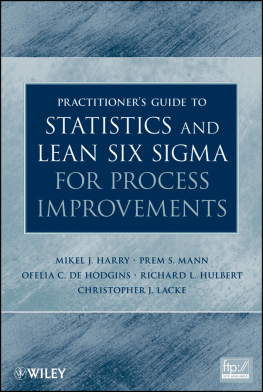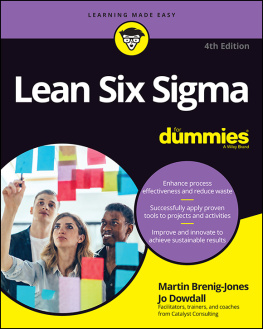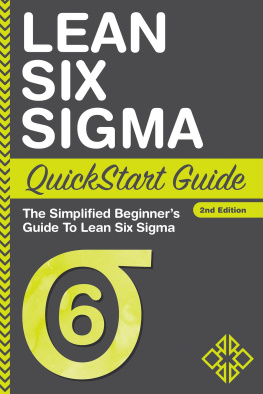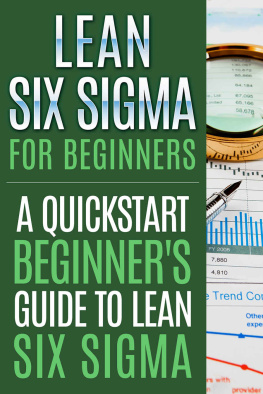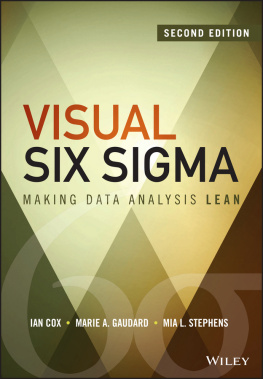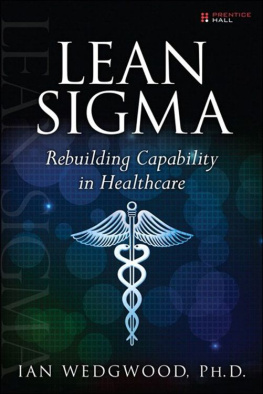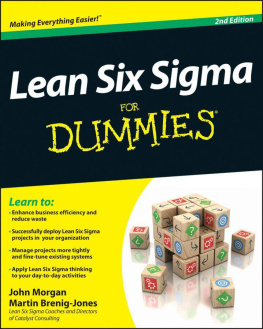Mikel J. Harry - Practitioner′s Guide to Statistics and Lean Six Sigma for Process Improvements
Here you can read online Mikel J. Harry - Practitioner′s Guide to Statistics and Lean Six Sigma for Process Improvements full text of the book (entire story) in english for free. Download pdf and epub, get meaning, cover and reviews about this ebook. year: 2010, publisher: Wiley, genre: Romance novel. Description of the work, (preface) as well as reviews are available. Best literature library LitArk.com created for fans of good reading and offers a wide selection of genres:
Romance novel
Science fiction
Adventure
Detective
Science
History
Home and family
Prose
Art
Politics
Computer
Non-fiction
Religion
Business
Children
Humor
Choose a favorite category and find really read worthwhile books. Enjoy immersion in the world of imagination, feel the emotions of the characters or learn something new for yourself, make an fascinating discovery.
- Book:Practitioner′s Guide to Statistics and Lean Six Sigma for Process Improvements
- Author:
- Publisher:Wiley
- Genre:
- Year:2010
- Rating:4 / 5
- Favourites:Add to favourites
- Your mark:
Practitioner′s Guide to Statistics and Lean Six Sigma for Process Improvements: summary, description and annotation
We offer to read an annotation, description, summary or preface (depends on what the author of the book "Practitioner′s Guide to Statistics and Lean Six Sigma for Process Improvements" wrote himself). If you haven't found the necessary information about the book — write in the comments, we will try to find it.
In todays business world, Six Sigma, or Lean Six Sigma, is a crucial tool utilized by companies to improve customer satisfaction, increase profitability, and enhance productivity. Practitioners Guide to Statistics and Lean Six Sigma for Process Improvements provides a balanced approach to quantitative and qualitative statistics using Six Sigma and Lean Six Sigma methodologies.
Emphasizing applications and the implementation of data analyses as they relate to this strategy for business management, this book introduces readers to the concepts and techniques for solving problems and improving managerial processes using Six Sigma and Lean Six Sigma. Written by knowledgeable professionals working in the field today, the book offers thorough coverage of the statistical topics related to effective Six Sigma and Lean Six Sigma practices, including:
Discrete random variables and continuous random variables
Sampling distributions
Estimation and hypothesis tests
Chi-square tests
Analysis of variance
Linear and multiple regression
Measurement analysis
Survey methods and sampling techniques
The authors provide numerous opportunities for readers to test their understanding of the presented material, as the real data sets, which are incorporated into the treatment of each topic, can be easily worked with using Microsoft Office Excel, Minitab, MindPro, or Oracles Crystal Ball software packages. Examples of successful, complete Six Sigma and Lean Six Sigma projects are supplied in many chapters along with extensive exercises that range in level of complexity. The book is accompanied by an extensive FTP site that features manuals for working with the discussed software packages along with additional exercises and data sets. In addition, numerous screenshots and figures guide readers through the functional and visual methods of learning Six Sigma and Lean Six Sigma.
Practitioners Guide to Statistics and Lean Six Sigma for Process Improvements is an excellent book for courses on Six Sigma and statistical quality control at the upper-undergraduate and graduate levels. It is also a valuable reference for professionals in the fields of engineering, business, physics, management, and finance.
Mikel J. Harry: author's other books
Who wrote Practitioner′s Guide to Statistics and Lean Six Sigma for Process Improvements? Find out the surname, the name of the author of the book and a list of all author's works by series.

